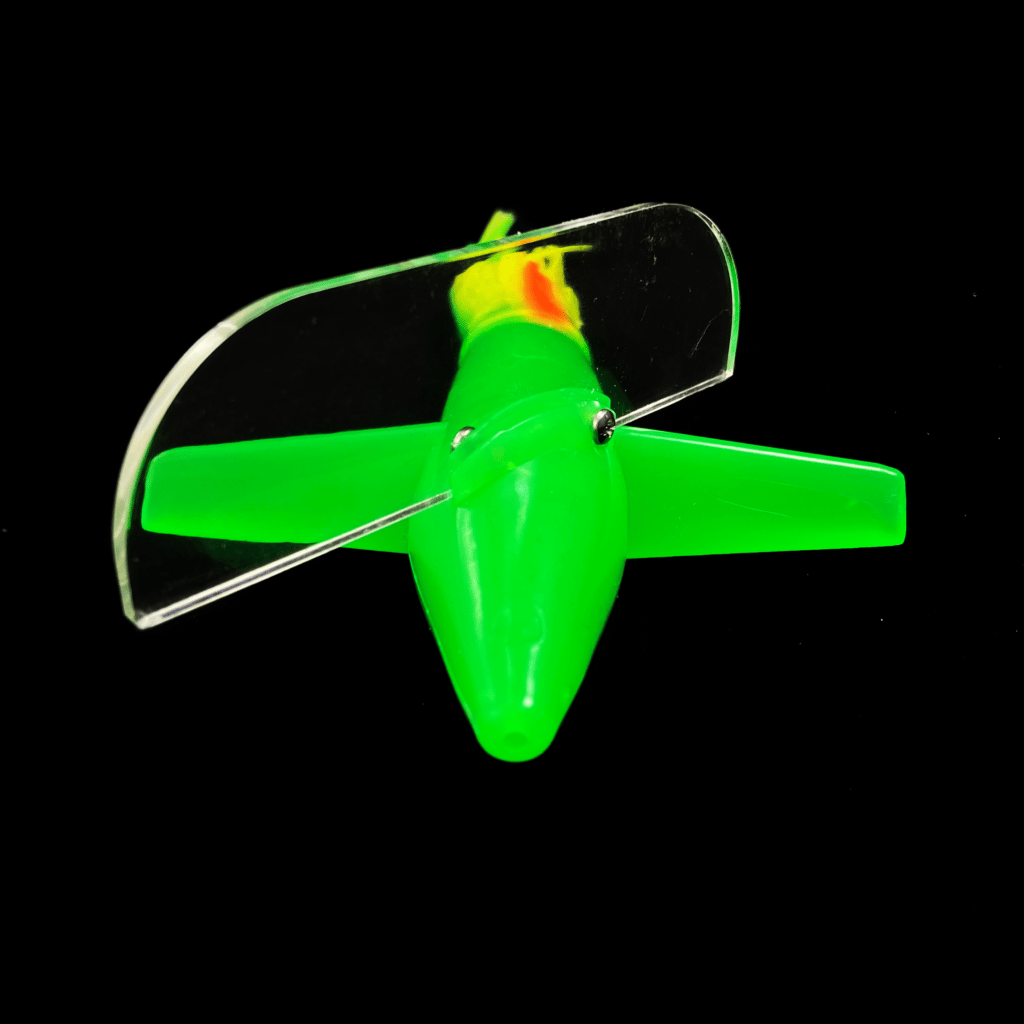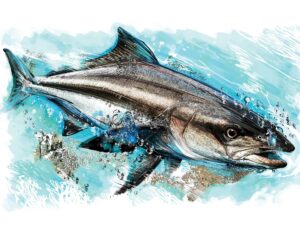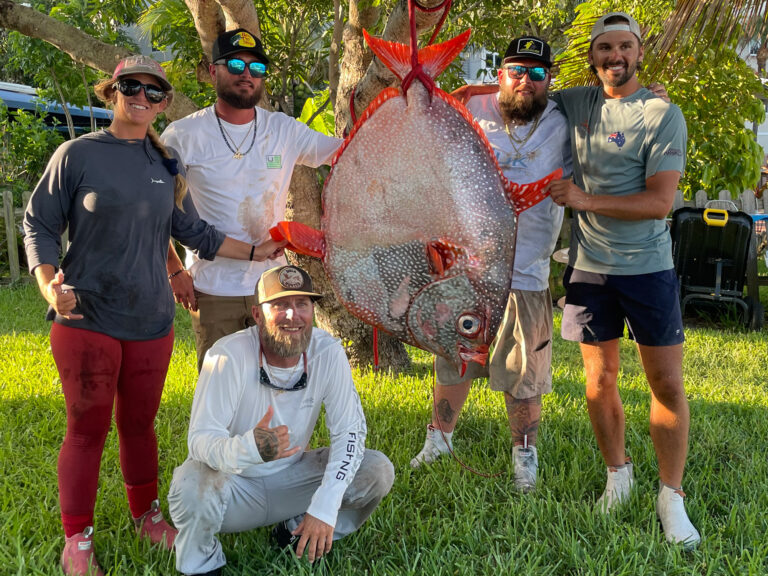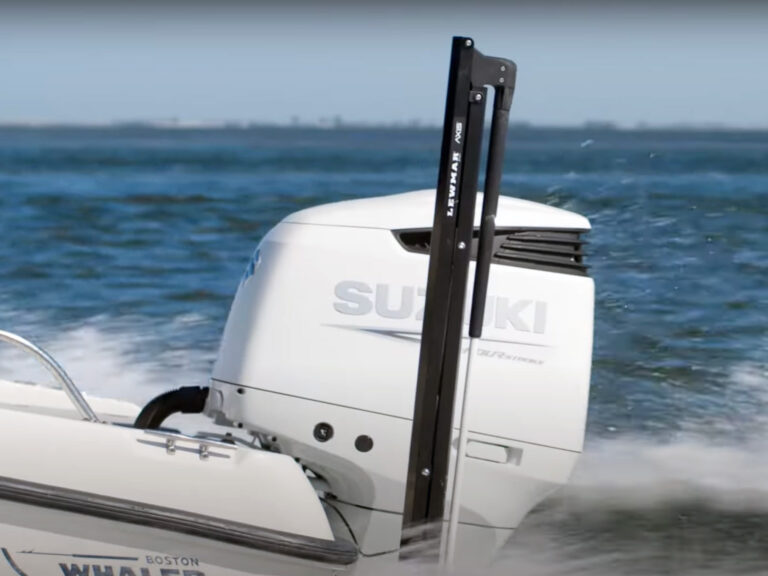
The hottest type of offshore trolling lure for the new decade goes by a variety of names such as offset spreader bars, side-tracker bars, wide trackers and tracker birds. Introduced about three years ago by Sterling Tackle in Beesley Point, New Jersey, these systems have exploded in popularity, especially among Northeast tuna anglers.
Other companies now offer side-tracker spreader bars as well, including Carlson Offshore Tackle, ChatterLures, and Tournament Cable. As word has spread about the effectiveness of this gear, so has use in other regions such as Florida’s central Atlantic coast, the upper Gulf of Mexico, Puerto Rico and Southern California, according to Steve Breunig, founder and owner of Sterling Tackle.

Keel is the Deal
“At the heart of the system is a teaser bird incorporating a bar and an offset keel,” Breunig explains. “This hub causes the spread of lures to track wider and gets them into cleaner water outside the prop wash.” As with conventional spreader bars and daisy chains, only the stinger lure at the very back of the spread carries a hook. Sterling made its stinger interchangeable, allowing anglers to select a lure that best matches the predominant forage at any given time.

Stable and Steady
The concept occurred to Breunig while offshore fishing about four years ago. “Late in season, the bites seem to come from farther back, but the farther back I set the spreader bars, the more they creeped into the center, even when using outriggers,” he says. “We started to experiment with various keels on the birds to force them to the outside.”
Read Next: Six Patterns for Successful Offshore Trolling
Within a few years, Breunig had perfected a system that worked so well that he didn’t even need outriggers to troll the spreads in clean water. Thus, the Sterling Wide Tracker system debuted. But his design involves more than just a keel. Creating the proper weight balance for the bird helps ensure stable trolling speeds, Breunig adds.

Left or Right
Sterling’s Wide Tracker systems come in right- and left-hand versions and range in price from $99 to $145. Other brands also offer side-tracker bird-bar systems with adjustable keels. The directional keel on ChatterLures side-tracker bird, for example, pivots and locks so you can troll the spread on either side of the boat. These products range in price from $129.99 to $149.99.

Quite a Spread
Depending on trolling speed and distance, side-tracker bars such as Sterling’s Wide Trackers expand a trolling spread by 40 to 60 feet. However, don’t allow side-trackers to swing too far out, if you want multiple hookups. “They need to be out in clean water, but not so far out that a school of tuna can’t find other bars or trolled lures and baits elsewhere in the spread, such as down the middle or on opposite sides of the wake,” Breunig says.

Trolling Speed
While the sea state usually determines trolling speed, Breunig likes to run the Wide Trackers at about 5 to 6 mph for bluefin tuna and 8 mph for yellowfin and bigeye tuna. As with any offshore trolling lure, rough seas force captains to slow down so lures remain in the water. To date, the biggest fish caught on a Sterling Wide Tracker was a 440-pound bluefin.

Bonus Fish
Tuna represent the primary focus of side-tracker bar anglers, but a variety of other offshore species bite these lures, including mahi, marlin (blue and white) and wahoo. If you might encounter wahoo, Breunig recommends rigging with wire to prevent the inevitable bite-off from a toothy ‘hoo.








